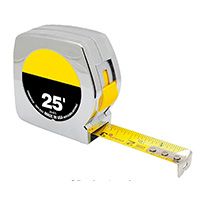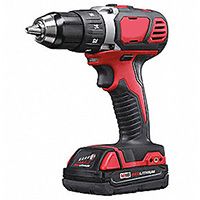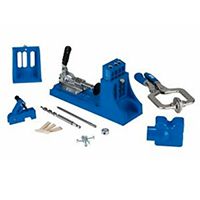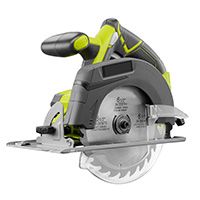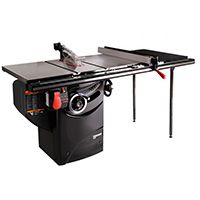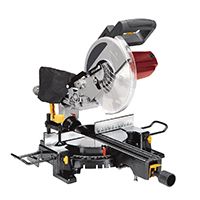Want to keep your workshop dust-free? A downdraft sanding station is your secret weapon. In the video above, Jenn Largesse from House One shows you how she added a built-in downdraft sanding station to her mobile workstation. You’ll also learn how to make a removable top so you can use the space for other projects when you’re not sanding.
Materials and Tools Needed To Add a Sanding Station to Your Workbench
Before beginning this project, gather the following materials:
- 1 1/4-inch pocket hole screws
- 1 1/4-inch wood screws
- 1/4 x 2′ x 4′ plywood project panel
- 1/4″ x 3/4″ lattice molding
- 2 x 4 x 8′ board
- 3/4″ plywood
- Caulk (optional)
- Pegboard project panel
- Wood glue
You’ll also need a few essential tools for this project, including the following:
- Drill
- Jigsaw
- Pocket hole jig and bit
- Safety equipment
- Tape measure
Scroll to the bottom of this page for the full cut list for this project.
Preparing the Workbench Surface To Make Room for the Sanding Station
First, you need to make room for your new sanding station. Here’s how Largesse does it:
- Mark the cutout area on your work surface.
- Set the depth of your circular saw blade to match the thickness of the workbench top.
- Use a straightedge to guide your saw along the marked lines.
- Make a plunge cut for the back line of the opening.
- Use a handsaw to finish the cuts at the corners for precision.
Building the Sanding Box
The sanding box is the core component of your downdraft station. Follow these steps to assemble it:
- Cut the sides of the box from 3/4-inch plywood so that the edges will run partially under the work surface. This creates a lip for the cutout to rest back in place as a cap.
- Cut a base from 1/4-inch plywood sized to fit the box frame.
- Install the base using glue and nails for a secure attachment.
Creating the Vacuum Port for the Sanding Station
Be careful and precise when connecting your shop vacuum to the sanding station. Use the process below:
- Use your vacuum attachment to size an opening on the bottom of the box.
- Drill holes at the ends of the marked opening.
- Use a jigsaw to remove the rest of the material for the port.
- Drill holes through the corners of the vacuum attachment and the box.
- Dry-fit the installation with nuts and bolts for proper alignment.
Boosting Sanding Station Suction Power
Want your sanding station to work even better? Add some angled pieces to the inside. Just cut 1/4-inch plywood strips and angled “wings.” Install these inside the box to direct sawdust toward the vacuum port. This lessens the open area inside the box, creating more suction.
Installing the Pegboard Top of the Sanding Station

The pegboard top is the secret to dust filtration:
- Attach support strips around the top of the box to hold the pegboard.
- Cut the pegboard to fit snugly within the support strips.
- Aim for a tight fit that prevents air leakage, but still allows for removal and cleaning.
- Make any necessary trims using a table saw for precision, then dry-fit the pegboard in place.
Sealing and Finishing the Sanding Box
Largesse recommends applying caulk to seal all joints in the box. Pay special attention to the area around the vacuum port on the underside of the box. You can also permanently secure the vacuum port after sealing. This maximizes performance and prevents dust from leaking.
Putting the Sanding Box and Workbench All Together
With your sanding box ready, you can add it to your existing workbench:
- Use pocket holes to add 2-by-4 supports along the side and back of the opening of your workbench.
- Prepare the box’s inside edges with pilot holes and screws.
- Position the box and sink the screws into the supports and sidewall.
- With the doors off, attach the fittings to connect your vacuum hose.
- Test the suction for proper function.
- Put the doors back on.
Largesse shows how effective her sanding station is by sanding with the vacuum on and off—there’s a notable reduction in airborne dust when the system is active.
Creating a Removable Cap for Your Sanding Station
We recommend maximizing your workbench space by constructing a removable cap. Cut a piece of plywood to fit the opening on the workbench surface. Make sure the cap rests securely on the lip created by the box frame, and sand the cap’s edges for a smooth fit.
To see the other customizations Largesse made to this bench, check out the links below:
- Building a Mobile Workbench With Built-In Table Saw
- Adding Tool Organization to a Workbench
- Building DIY Drawers
- Creating a Dust Collection System
- Adding a Clamp Rack
Cut List for Your Sanding Station Project

- 3/4-inch plywood sides: Two, 15 1/2 inches
- 3/4-inch plywood front and back: Two, 25 1/2 inches
- 1/4-inch plywood base: One, 25 1/2″ W x 17″ D
- 1/4-inch plywood wings: Two, 15 1/2″ W x 11″ D
- 1/4-inch pegboard: One, 15 1/2″ D x 24″ W
- 1/4″ x 3/4″ lattice: Four, 15 1/2 inches
- 1/4″ x 3/4″ lattice: Two, 23 1/2 inches
- 2-by-4 support: One, 17 inches
- 2-by-4 support: One, 25 1/2 inches
